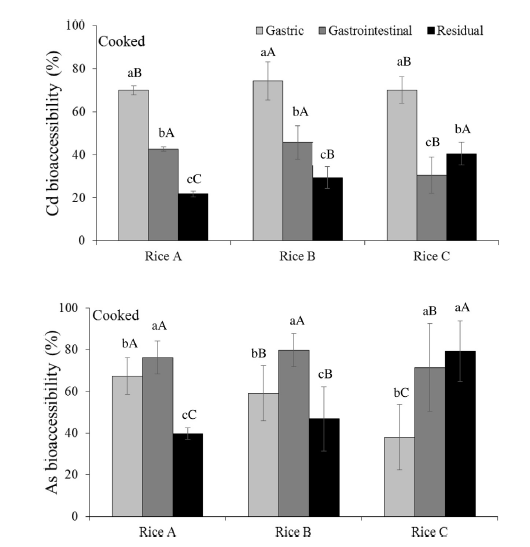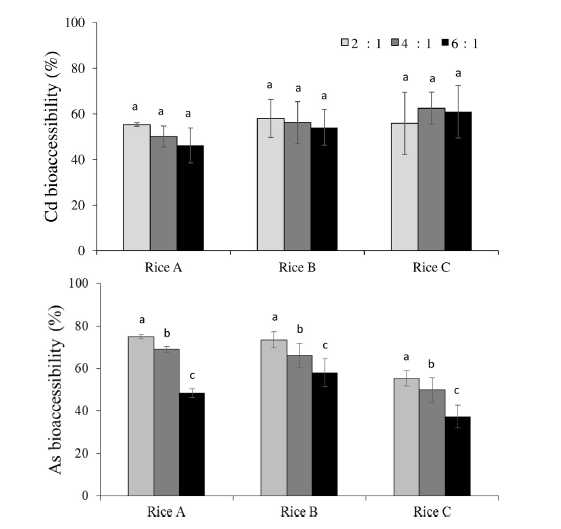 打印本文
打印本文  关闭窗口
关闭窗口
摘要:The health risks associated with rice consumption may decrease if consumers use cooking practices
which can reduce the bioaccessibility of metal(loid)s. The effects of cooking on the Cd and As bioaccessibility, at three contamination levels of rice, were studied. Results indicated that cooking reduced
bioaccessibility of Cd and As in rice. Cooking resulted in a significant increase (p < 0.01) of Cd and As
concentrations in the residual fraction. Low volume water-cooking of rice to dryness reduced total Cd
by about 10% for rices A and B, while medium or high volume water-cooking had no effect on Cd bioaccessibility in all rice types. In contrast, low volume cooking did not remove As, but a significant decrease (p < 0.05) was observed when cooking with higher volumes of water. This study provides information for a better understanding of more realistic estimation of metal(loid)s exposure from rice and the possible health risks.
关键词: Human exposure,Risk assessment,PBET,In vitro method,Established daily intake (EDI),
Target hazard quotient (THQ)
全文下载:Assessment of influences of cooking on cadmium and arsenic bioaccessibility in rice, using an in vitro physiologically-based extraction test
/UploadFiles/file/201610/2016102009044710.pdf

图1:3种不同污染水平大米中镉和砷的生物有效性

图2:不同水量烹饪后对大米镉和铅生物有效性的影响
 打印本文
打印本文  关闭窗口
关闭窗口